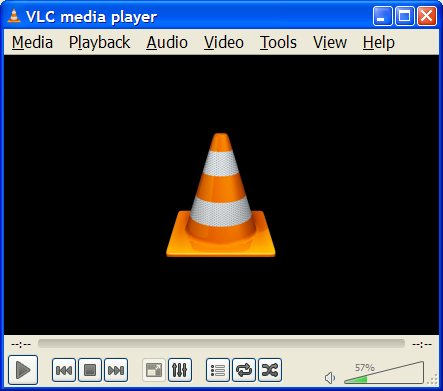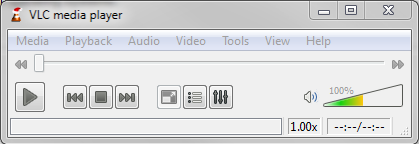Difference between revisions of "Documentation:History"
| Line 23: | Line 23: | ||
[[Image:Default Interface Mac.PNG|center|]] | [[Image:Default Interface Mac.PNG|center|]] | ||
| − | == | + | ==Basic Playback== |
| − | + | ===Play a file=== | |
| − | + | ===Play a CD/DVD/VCD=== | |
| − | + | ===Play a network stream (WebRadio, WebTV, etc.)=== | |
| − | |||
| − | |||
| − | |||
| − | |||
| − | |||
| − | + | ===Play from an acquisition card=== | |
| − | |||
| − | |||
| − | |||
| − | |||
==Getting help== | ==Getting help== | ||
Revision as of 10:34, 21 December 2010
Contents
General Interface Description
VLC has several interfaces:
- A cross-platform interface for Windows and GNU/Linux, which is called wxWidgets
- A native Mac OS X interface
- An interface which supports skins for both Windows and GNU/Linux.
Below are screenshots of VLC on various interfaces. Despite these different interfaces, VLC's functions essentially work the same on all operating systems.
Windows and GNU/Linux (wxWidgets)
The interface shown below is the default for Windows and GNU/Linux (although this screenshot is from Windows, it will look similar on GNU/Linux). More features can be displayed, by selecting them in the View menu.
Mac OS X
The interface shown below is the default for Mac OS X.
Basic Playback
Play a file
Play a CD/DVD/VCD
Play a network stream (WebRadio, WebTV, etc.)
Play from an acquisition card
Getting help
Documentation
The VideoLAN documentation is made up of four documents:
- The Play-Howto (for which this article is the introduction): The complete guide to the VLC media player.
- The Streaming Howto: The complete guide to VLC as a streaming server, including practical examples to set up a streaming solution.
- The VLS user guide: The complete guide for VLS (VideoLAN's legacy streaming server)
- FAQ: Frequently Asked Questions about VideoLAN.
The latest version of these documents, in a variety of languages, can be found on the documentation page.
User support
There are different methods to get support from The VideoLAN team, including IRC and mail. For more details, please visit our Support page. Users can also visit our Official FAQ Page for more help.
Please read the Documentation Editing Guidelines before you edit the documentation


